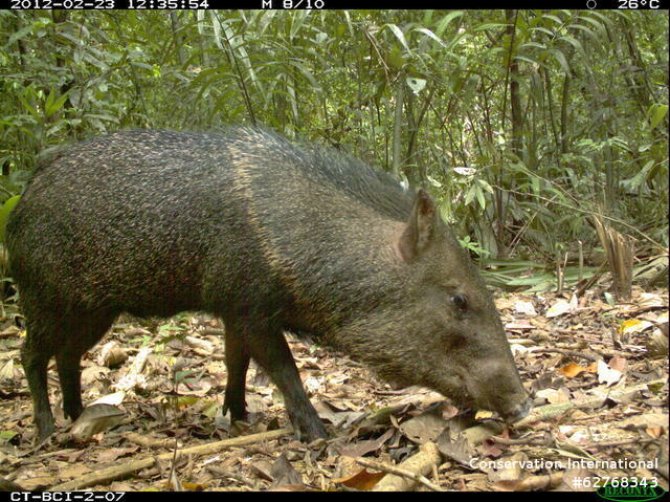News
Where the wild things are… Which tropical forest mammals occur where?
Tropical forests sustain hundreds of wonderful and seldom seen mammal species: spanning jaguars, tapirs, monkeys and elephants. Many of these are rare, endangered and unstudied. Also, given how hard they are to observe we often lack an understanding of which species occur in what locations. In a coordinated multi-year effort across three continents, members of the so-called “Tropical Ecology Assessment & Monitoring (TEAM) Network” have addressed that.
The research team examined tropical forest mammals using a network of automatic cameras. These cameras, known as “camera-traps”, were set up in 1002 locations in three continents, and provided millions of mammal photographs. Douglas Sheil, Professor Forest Ecology and Forest Management at Wageningen University & Research and senior author of the study: “We used these photographs and statistical models to map, for the first time, where 161 mammal species occurred within and among multiple protected areas. In particular, we assessed how species with different body sizes, diets and specialisations occurred in our sampling sites, and whether any patterns were consistent across continents.”
Selective species found more widely
The study was recently published in Proceedings of the Royal Society B: Biological Sciences. Sheil: “The results show that, in all continents, plant-eating species tend to be the most widely distributed within these forests when compared to meat-eaters. In the American tropics, smaller species cover more of the landscape than larger species.”

Importantly, many species in the tropical protected areas assessed in this study across America and Africa that are selective about their type of landscape (specialist species), use more of the available forest landscape than anticipated, given their potential fussiness. This seems to be good news for biodiversity conservation, as these species are often at a higher risk of extinction. The results of the study suggest that protected areas provide an important benefit to these species, as they are particularly vulnerable to human activities and impacts, and protected areas seem to be a refuge for them. Not all implications are fully understood, though, which remains work in progress.
More forest conservation needed in South-East Asia
However, the study also highlights that these patterns are different in the tropical forests of South-East Asia. Here specialist species appear particularly restricted within the forest habitat available to them, i.e. they occur in fewer sites than do generalists species.

First author Asunción Semper-Pascual from the Norwegian University of Life Sciences noted the problem of such species being highly restricted in how they use forest: “For instance, our analyses indicated that within their local range, specialist species such as the Dusky Langur or the Sunda Clouded Leopard occur in less than 4% of the locations where our camera-traps were placed. While generalist species, such as the wild pigs, occur in more than 65% of our camera-trap locations. This suggest that additional conservation actions are needed to conserve specialist species in South-East Asian protected forests.”
In effect many of the rarer and more vulnerable species do not use most of the protected forest available to them. The researchers will continue their work to understand the causes and implications of these patterns, and their practical significance for conservation.